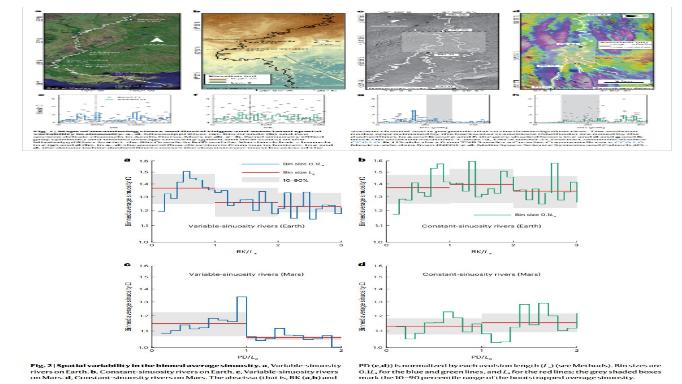Dr. MA Hongbo and collaborators revealed two different meandering patterns of rivers before entering the sea, as reported in “Nature Geoscience.”
Associate Professor Dr. MA Hongbo, from the Department of Hydraulic Engineering at Tsinghua University, has published a research paper titled “Lowland River Sinuosity on Earth and Mars Set by the Pace of Meandering and Avulsion” in Nature Geoscience. The article, led by Dr. WU Chenliang, a postdoctoral researcher at Tulane University in the United States, was co-conceived by Dr. MA Hongbo, who served as a co-author. Dr. MA Hongbo also participated in data analysis and the writing of the paper.
The article discusses two different patterns of changes in curvature that occur when rivers approach the coastline from inland and explores the underlying reasons for these variations. When lowland rivers flow into the sea, they often exhibit a decrease in sinuosity. Therefore, many studies consider the reduction in sinuosity as a crucial indicator of river entry into the sea. However, this study finds that there are two different trends in the curvature exhibited by rivers when they enter the sea. One trend is an increase in curvature, while the other is the maintenance of constant curvature. Both trends can be observed in rivers on the Earth and Mars. This reflects the competition between the time scales of maturity in the development of sinuous rivers and the time scales of river avulsion during their evolution. The research also revealed that flow variability is a crucial dynamic factor controlling the occurrence of these two patterns. Predictably, higher variability corresponds to a faster maturation time of sinuous rivers, and there will be greater consistency in sinuosity between the upstream and downstream areas. Therefore, under future climate conditions, an increase in flow variability implies a faster lateral swinging of river channels. Residents near the river mouth will face more uncertain channel oscillation characteristics in the future.

The download link for the article is:
https://www.nature.com/articles/s41561-023-01231-1
Nature Geoscience specifically published an introduction to the research article:
https://www.nature.com/articles/s41561-023-01233-z